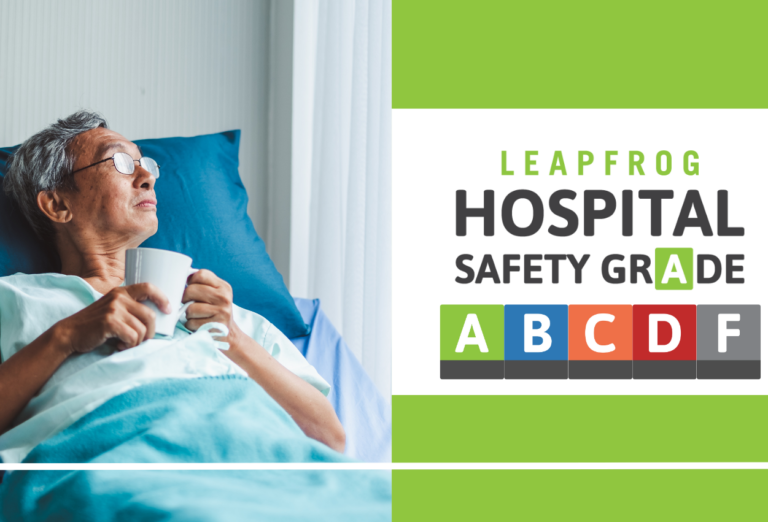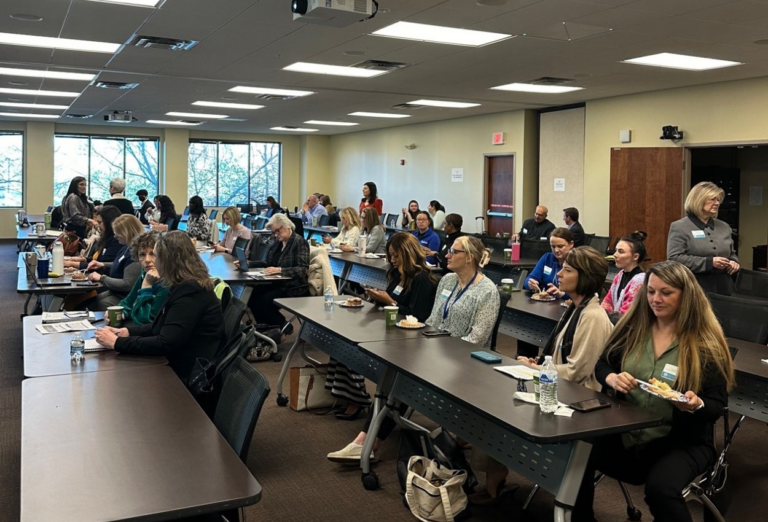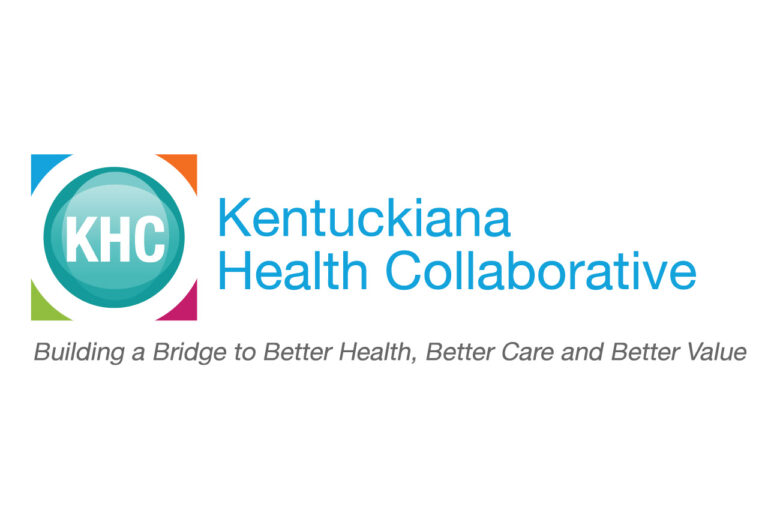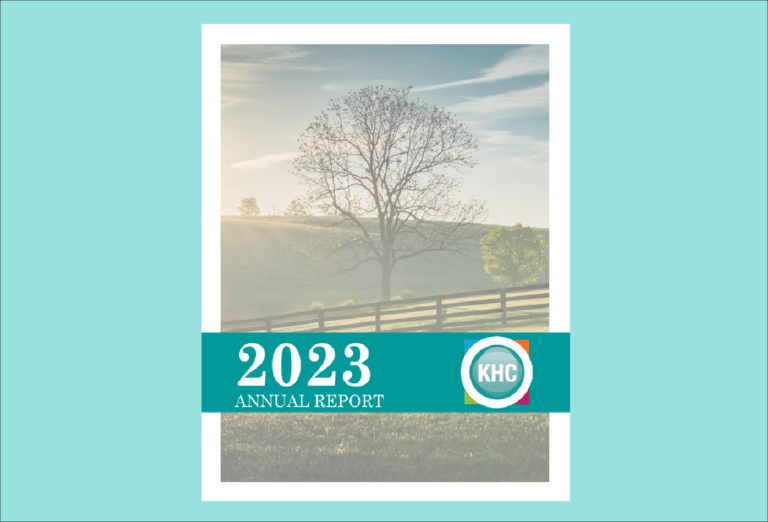Two years ago, the KHC launched a blog with the goal of improving communication with our members and the community about KHC activities, partner work, local and national news, and industry updates. In what has become an annual tradition, we are ending 2018 with a “Best of” for our blog, looking at posts that have had the heaviest readership and those that our staff deemed its favorites.
Most Read Posts
- Kentucky Core Healthcare Measures Set Finalized. Leading the development of a core set of primary care measures for Kentucky was one of the greatest accomplishments in the KHC’s 15-year history, and readership of the blog post that announced its completion reflected that, making it the highest read post of the year.
- High School Students Found Action Group to Improve KY Youth Mental Health. With mental health as a top priority, the KHC began a new collaboration with the Student Alliance for Mental Health Innovation and Action, a network of passionate students driving the movement to improve youth mental health through research and action.
- SBIRT: Why Should I Care? This guest post, written by Mallori De-Salle, highlights the need for a fundamental change of thinking around how we view substance use disorders.
- SBIRT Toolkit Released for Healthcare Providers to Address Opioid Crisis. In 2018, the KHC developed through a Kentucky Opioid Response Effort grant a guide for primary care providers on Screening, Brief Intervention, and Referral to Treatment (SBIRT), which identifies individuals with risky and unhealthy substance use behaviors.
- KY Core Measures Set Now Available for Public Comment. Again reflecting the magnitude of the development of a core set of healthcare measures, a second post on the subject showed up on the most read blog post lists. This piece announced the beginning of a public comment period. The KHC received many thoughtful responses from healthcare stakeholders across the Commonwealth.
KHC Staff Favorites
Kentucky Core Healthcare Measures Set Announced and Action items identified on healthcare affordability in the region at the KHC Community Health Forum
Selected by: Randa Deaton
It is always hard to pick a favorite blog post of the year, so this year I’ve decided not to pick just one but rather two of my favorites about the power of collaboration by Stephanie Clouser. The first one is Kentucky Core Healthcare Measures Set Announced, because it is one of the KHC’s greatest accomplishments over its 15 year history. This blog post summarizes the power of collaboration, when many minds and stakeholders come together. My second favorite blog post is her most recent post titled, Action items identified on healthcare affordability in the region at the KHC Community Health Forum. This post describes the KHC’s first candid discussion with multiple healthcare stakeholders about the drivers of healthcare affordability and its impact on our community. The event was comprised of many thought leaders representing payers, purchasers, providers, policymakers, and consumers, and the convergence of ideas indicated a readiness by many of the stakeholders to move toward action. As we look forward to 2019, the KHC will continue to use its platform to promote collaboration to advance the healthcare of our community.
—
High School Students Found Action Group to Improve KY Youth Mental Health
Selected by: Teresa Couts
My favorite blog came from Allison Tu, a student at duPont Manuel High School. She founded an action group called the Student Alliance for Mental Health Innovation and Action, or StAMINA. StAMINA is a student-driven group on a mission to change the state of student mental health in Kentucky. I find it refreshing that teenagers are focused on serious health challenges that affect their peers. Students are experiencing stress, anxiety, and depression that may go unchecked by parents, family members, and teachers resulting sometimes in suicide. StaMINA’s mission to decrease stigma surrounding mental illness and increase effective mental health prevention and treatment services for Kentucky youth is commendable. I dislike the stereotypes that we put on teenagers, such as, they are on social media all day, only care about themselves, are irresponsible, lazy, up to no good, and too young to understand anything about life. The youth are our future and with groups like StaMINA we are in good hands.
—
National Alliance Annual Forum Identifies Priority Issues and Key Actions for Employers
Selected by: Michele Ganote
This year was my first to attend the annual National Alliance Forum. It was exciting to be present as KHC was awarded the 2018 Membership Leadership Award for this year’s work on healthcare measurement alignment, youth mental health and opioid use disorder. The conference consisted of some great topics with very knowledgeable speakers. It’s interesting that so many speakers are passionate about what they do because of their own experiences with health and/or healthcare. It’s comforting to know that none of us are alone with what we have experienced in the healthcare world. We can always find someone who can relate. Marc Brackett, PhD, Yale Center for Emotional Intelligence, was one of my favorite speakers. The approach at Yale Center is to focus on the role of emotions and emotional intelligence in learning, decision making, relationship quality, and mental health. His talk was interesting and he presented the information in a way that was fun and relatable.
—
Selected by: Natalie Middaugh
One of my favorite blog posts of 2018 was from Mallori DeSalle, Outreach Coordinator and Lead SBIRT Trainer at the Indiana Prevention Resource Center, and guest panelist on our October SBIRT webinar. SBIRT calls for a fundamental change of thinking around how we view substance use disorders, and this post highlights the ease and benefits of making this change. Mallori raises the question, “What if we look at alcohol or substance use as a health behavior that can either increase or decrease our risk for experiencing harm, much like our current views on seat belts?” This comparison emulates the “common sense” nature of SBIRT and helps us envision how an upstream approach to addressing risky substance use behaviors can be critical in avoiding the associated negative outcomes. I have heard resounding enthusiasm around SBIRT implementation, both locally and nationally, and I am hopeful that the KHC can continue serve as catalyst and supporter of its adoption.
—
QPR Reflections: Suicide Prevention Training Hits Home
Selected by: Stephanie Clouser
This piece was a personal one to me, starting out as a journal entry that morphed into something more. In September, as part of the KHC hosted a Question, Persuade, Refer (QPR) suicide prevention training session as part of a community goal to set a record for people trained in one week. It hit home for me, being in the position myself just last year. The KHC has spent the last year and a half focusing on better integration of mental and physical health, recognizing that not being afraid to have conversations around mental health is a big part of reducing stigma and better addressing the issue in our community. I was grateful for the opportunity to share some of my story and grateful that the work the KHC has done around mental health has made a personal impact on me.






